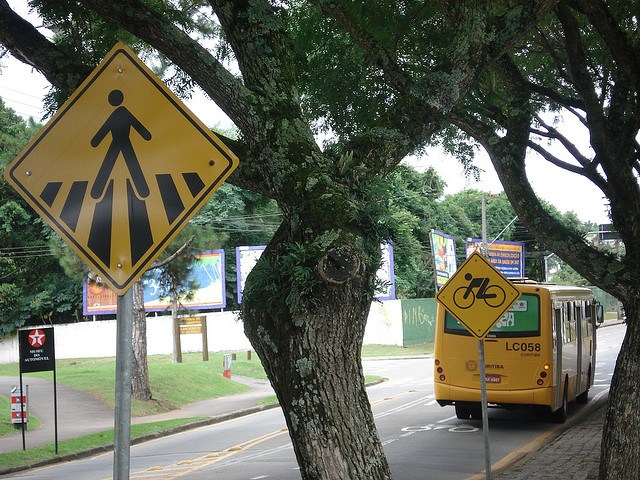This article was originally published by Alexandre Costa on Gazeta do Povo and This Big CIty.
The city of Curitiba in Brazil announced the details of Plan Cicloviário on September 6. The big news, however, is not the $90 million investment to implement hundreds of kilometres of new bike roads in the capital by 2016. Nor is it the creation of designated routes for bikes on 7th Avenue, a major artery of the city centre. And it’s not the design of a ‘cycling microgrid’ in the Industrial City of Curitiba, to benefit workers who use the bicycle as a means of transport.
The real news is the plan itself, and all that it represents.
Curitiba now has a bicycle plan, announced as a “package”. In the political world, something tends to only make ‘package status’ when it is an emergency and it is critical. One hears “package” for Economy, Education, Health and Public Safety. But now the bike has also earned a package of 12 measures, ranging from infrastructure deployment to the creation of a ‘cycling plaza.’ Hopefully it will be enough to drag the concept of multi-modality into the mainstream of city planning in Curitiba.
The twelve main points of Plan Cicloviário:
- A cycling microgrid, with 19.5 km of roads linking different parts of the city. Deadline: 2014.
- Road calming on 6.3 kilometers of roads, with bike-priority areas at intersections. Deadline: 2014.
- Bike Rental terminals and segregated bicycle parking. Deadline: 2016.
- Upgrading existing bike lanes and bike-sharing facilities. Deadline: 2016.
- Completion of a 47km city park circuit linking eight city parks. Deadline: 2014.
- Completion of cycling infrastructure projects currently underway across the city.
- Bike lanes on Avenida Marechal Floriano Peixoto (3.84 km), the Green Line BRT route (1.76 km) and on Avenida Comendador Franco (19.2 km). Deadline: October 2013.
- Creation of a cycling plaza in downtown Curitiba. Deadline: 2014.
- Installation of 25 sets of bicycle parking facilities on pavements. Deadline: 2013.
- Installation of 20 sets of bicycle parking facilities at bus terminals in the city. Deadline: 2016.
- Publication of a ‘manual of cycling infrastructure’, documenting technical guidelines and unifying standards and procedures. Deadline: October 2013.
- Passing a law which allocates 5 percent of parking areas for bicycles and motorcycles in residential and non-residential areas. Deadline: In preparation.
All this makes it clear that the City of Curitiba is entering a new chapter of urban design, a chapter where the bicycle can be catered for on more than a symbolic level. While the mayor is photographed pedalling to work, technicians are working away on their drawing boards, municipal secretaries are meeting withcycling activists (or cicloativistas) and the transit department is getting a special body to take care of non-motorized mobility. The progress is undeniable. The plan does not lie about its ambitions, but at the same time it does not promise to build an Amsterdam in Brazil.
Indeed, there are certainly points of the plan that need to be ‘repaired.’ However, the city has proved that it is open to dialogue and purposeful contribution from those with feedback. Still, some people will remain frustrated that they will not have a bike path connecting their front door to their place of work or study. Others will be upset because streets will continue to be divided by cars, and some bike paths will remain shared with pedestrians. But the humanization of cities involves the sharing of public space. Blindly demanding segregation and nothing else is not exactly the most constructive way to go.
The feeling in Curitiba is that the city needs to take some of its innovative and daring spirit and apply it to urban planning. If the plans presented actually leave paper, I, as a citizen, will be satisfied. As a cyclist, I’ll be riding with a feeling of increased security and tranquility. As a cicloativista, I will keep pushing for it to get even better.









